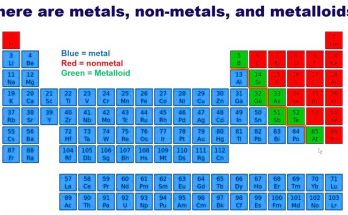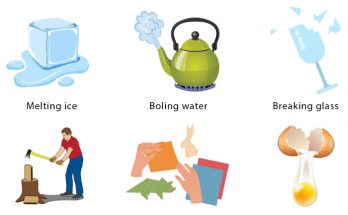Chapter 4 – Heat – Short Questions and Answers (Solved Worksheet)
Question- What are woollen clothes made from?
Answer- Woollen clothes are made from animal fibres.
Question- How is temperature usually measured?
Answer- Temperature is usually measured using a thermometer.
Question- What scale is commonly used to express temperature?
Answer- The Celsius scale is commonly used to express temperature.
Question- What is crucial to observe before reading a thermometer?
Answer- Understanding the scale and observing the bigger marks and divisions is crucial before reading a thermometer.
Question- What precaution should be taken before using a thermometer?
Answer- Before using a thermometer, it should be properly cleaned, preferably with an antiseptic solution.
Question- Why are digital thermometers considered safer?
Answer- Digital thermometers are considered safer because they do not contain toxic mercury.
Question- How should a clinical thermometer be cleaned?
Answer- A clinical thermometer should be cleaned using an antiseptic solution to ensure hygiene.
Question- What should be the position of the mercury level before using a clinical thermometer?
Answer- Before using a clinical thermometer, the mercury level inside it should be below 35°C.
Question- What is the purpose of a laboratory thermometer?
Answer- A laboratory thermometer is used to measure the temperature of objects other than the human body.
Question- What is conduction?
Answer- Conduction is the process by which heat moves from the hotter end to the colder end of an object, commonly observed in solids.
Question- Why do cooking pans typically have plastic or wood handles?
Answer- Cooking pans have plastic or wood handles because these materials are poor conductors of heat, preventing burns when holding the hot pan.
Question- How does heat generally transfer in solids?
Answer- In solids, heat generally transfers through conduction.
Question- What materials are considered good conductors of heat?
Answer- Aluminium, iron, and copper.
Question- Which materials are typically poor conductors or insulators of heat?
Answer- Plastic and wood.
Question- How does touching the non-dipped end of the materials help in classifying them as conductors or insulators?
Answer- If the non-dipped end feels hot, the material is a conductor, and if it doesn’t feel hot, the material is an insulator.
Question- What happens to hot water in the convection experiment?
Answer- The hot water rises upwards because it becomes less dense when heated.
Question- Why does the hand above the flame feel hotter than the hand on the side of the flame in the air convection experiment?
Answer- Because hot air rises, leading to an upward flow of hot air above the flame, making it feel hotter.
Question- What creates a sea breeze during the day in coastal areas?
Answer- Hot air rises over the land, and cooler air from the sea rushes in to replace it, creating a sea breeze.
Question- What causes the hot water to rise in the convection experiment?
Answer- Hot water rises because it becomes less dense when heated.
Question- What is the main method of heat transfer in water and air?
Answer- Convection is the main method of heat transfer in water and air.
Question- During the day in coastal areas, what type of breeze is experienced?
Answer- A sea breeze is experienced during the day in coastal areas.
Question- What causes the land to heat up faster than the sea during the day?
Answer- The land heats up faster than the sea because soil and rocks can absorb and retain heat more effectively than water.
Question- What is the cooler air that rushes in from the sea during the day called?
Answer- The cooler air that rushes in from the sea during the day is called the sea breeze.
Question- Which type of breeze, sea breeze or land breeze, is experienced during the night?
Answer- The land breeze is experienced during the night.
Question- How does heat from the sun reach us through space?
Answer- Heat from the sun reaches us through space by the process of radiation, which doesn’t require any medium.
Question- What happens to an object’s temperature when it absorbs heat through radiation?
Answer- When an object absorbs heat through radiation, its temperature increases.
Question- Why are you advised to use an umbrella in the sun?
Answer- An umbrella is advised to be used in the sun because it acts as a shield against direct sunlight, reducing the amount of heat radiation that reaches your body and keeping you cooler.
Question- What is one effective method to create trapped layers of air in the walls of buildings?
Answer- One effective method to create trapped layers of air in the walls of buildings is by using hollow bricks in construction.
Question- How does the trapped air in hollow bricks affect heat transfer?
Answer- The trapped air in hollow bricks acts as a barrier against the transfer of heat, resisting the entry of external heat into the building during hot weather and preventing the escape of warmth during cold weather.
Question- What are the benefits of using hollow bricks in construction?
Answer- The benefits include energy efficiency, a comfortable living environment, reduced environmental impact, and cost-effectiveness in terms of long-term energy savings.
Question- Why are light-coloured clothes preferred during summer?
Answer- Light-coloured clothes are preferred during summer because they reflect most of the sunlight, absorbing less heat, which helps in staying cooler.
Question- What observation is made when two identical tin cans, one painted black and the other white, are placed in the sun?
Answer- The water in the black-painted can is usually warmer because dark colours absorb more sunlight and convert it into heat energy.
Question- Why are dark-coloured clothes chosen in winter?
Answer- Dark-coloured clothes are chosen in winter because they absorb more sunlight and retain heat better, helping to stay warm.
Question- What makes wool an excellent insulator in winter clothing?
Answer- Wool acts as an excellent insulator because it traps tiny air pockets within its fibres, preventing body heat from escaping and keeping the cold out.
Question- Why is it often better to use two thin blankets joined together in winter instead of one thick blanket?
Answer- Using two thin blankets creates an additional layer of trapped air between them, acting as an insulator and preventing body heat from escaping, making one feel warmer.
Question- How does trapped air within the wool fibres help in keeping warm?
Answer- Trapped air is a poor conductor of heat; it creates a barrier within the wool fibres, preventing body heat from escaping into the cold surroundings.
Also Check -Chapter 4- Heat-Class 7 Question and Answer (Long)
Also Check -Chapter 4- Heat-Class 7 Question and Answer (MCQ)
Also Check -Chapter 4- Heat-Class 7 Question and Answer (Fill in the Blanks)
Also Check -Conduction, Convection, and Radiation- Class 7 Science Explained
Also Check -Sea Breezes and Land Breezes – Class 7 Science explained
Also Check -Class 7 science -Chapter 4 – Heat – Definition and Explanation of Important Keywords
Also Check -Class 7 science -Chapter 4 – Heat -Complete Notes
Also Check -NCERT Solutions For Class 7 Science Chapter 4 – Heat

